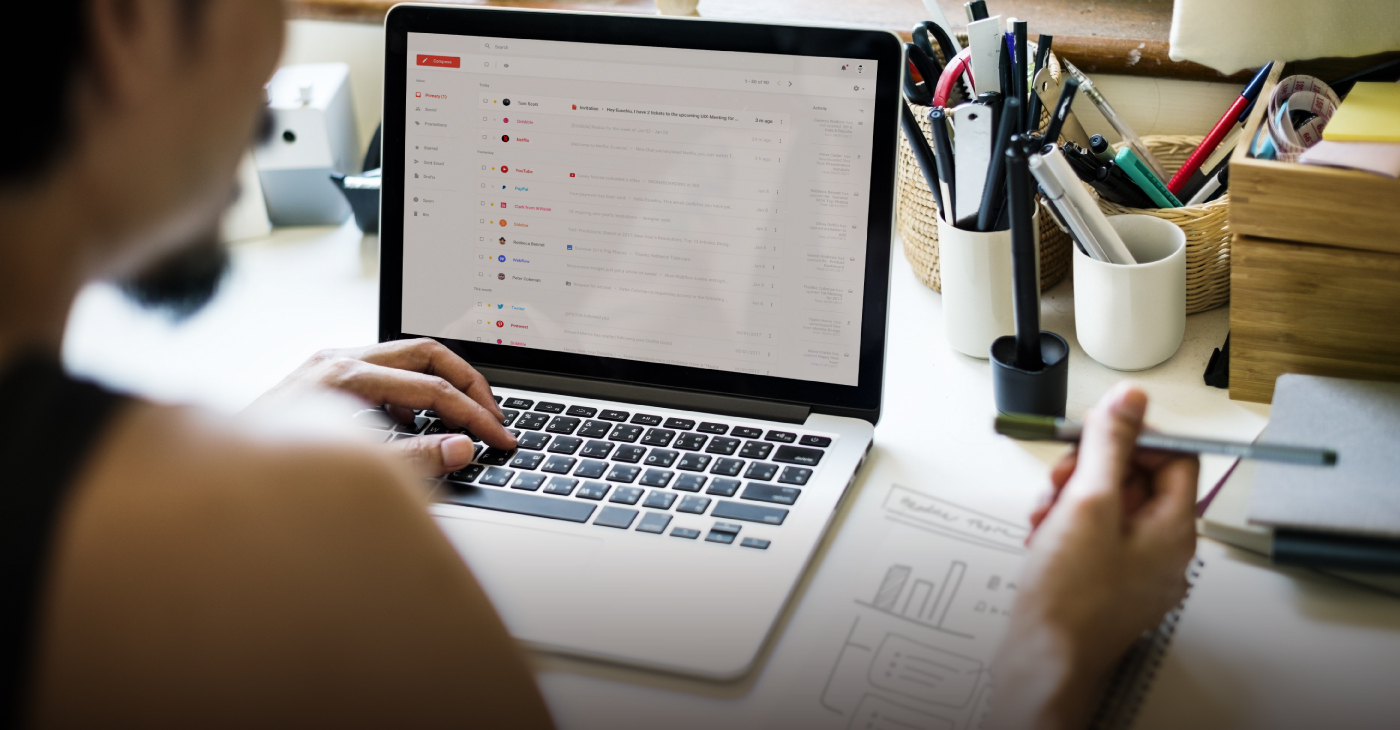EMAIL MARKETING
Apple’s New Hide My Email Feature: What it is and How it’s Changing Email Marketing

An ongoing priority for B2B marketers is the successful value exchange between them and their intended audiences. B2B brands provide value to their audiences via research and content with lead generation forms and email signup promos. In return, B2B brands nudge form completers toward conversions and improve the way their audience perceives them.
The value exchange B2B marketers enjoy between their intended audience is an invaluable one when it comes to forming ongoing customer relationships. Lead gen website forms and promotional email signups solidify this ongoing relationship when people opt-in to receive a brand’s promotional messages.
So, what’s the problem? Sometimes, a B2B brand’s intended audience provides non-corporate email addresses on their signup or lead-gen forms. This, unfortunately, undermines a brand’s ability to identify a lead as well as the company they represent, which is crucial to creating a seamless customer journey that increases conversions and makes customers happier.
Some B2B marketers have ultimately decided that it’s no longer worth accepting non-corporate email addresses on their forms. To that end, let’s quickly discuss the main factors that are currently influencing B2B marketers’ decisions to accept non-corporate addresses; specifically, we’ll dive into Apple’s new and improved ‘Hide My Email’ feature, how to use it, and its most notable pros and cons.
What is the ‘Hide My Email’ Feature, and How Does it Work?
Apple’s latest efforts to drive consumer data privacy and protection through its services and products have resulted in a trifecta of privacy services for iCloud users. Among this trio of iCloud-exclusive features is the new “Hide My Email” feature, which Apple has announced is a paid feature that lets users easily generate a unique icloud.com address.
With Hide My Email, Apple users may sign up for and log into accounts used for digital services that require a valid email address. The randomly generated address is valid for use only with apps or sites for which that address is specifically created. The upside to this fact is that Hide My Email users can easily use their randomly generated icloud.com address as a valid address when filling out any form.
Promoted together with Apple’s Mail Privacy protection, Hide My Email lets users redirect emails sent to their unique icloud.com address to another email account of their choosing.
Users do have recourse should they decide they don’t want to redirect emails from their unique iCloud address to their relay address. Should a user no longer want to redirect emails from their iCloud address, they may deactivate their relay address and cause any emails sent to it to bounce. Relay addresses, while not as risky as temporary and randomly generated addresses in that they don’t expire, still pose a danger to B2B brands and their marketers.
Why Hide My Email Potentially Hurts B2B Marketers
Apple’s Hide My Email feature does, indeed, mask a person’s identity since it uses unique relay addresses that are not associated with a particular company. Identity theft can take many forms, after all, and email addresses often provide threat actors with all the details they need to commit both personal and business identity theft. This comes at a cost to marketers, though, who are unable to associate a permanent address with a potential new customer prospect.
What’s more, is that there is nothing stopping a form completer from using Hide My Email again; marketers interacting with Hide My Email users must contend with entirely new relay addresses with each form they disseminate to their intended audience, making it nearly impossible to determine whether they’re receiving completed forms from a previous form-completer.
Hide My Email poses problems for marketers that use email verification services like Kickbox to classify email addresses in their database and uncover information about an email address’s overall quality. Ordinarily, data-minded marketers can prune their marketing database of email addresses with verification services to separate the junk from potentially valuable conversions. As it stands, though, Hide My Email makes it tricky to uncover data muddled in a marketing database.
Hide My Email also has the potential to negatively impact a brand’s email deliverability which, at its core, is the capability to consistently deliver emails to the inboxes of an intended audience. Hide My Email users may immediately harm a brand’s deliverability once they deactivate their relay address since any emails they receive in the future automatically hard bounce. Experience enough hard bounces and, eventually, your deliverability suffers in the same way it would if you were to experience too many spam complaints.
Solid deliverability is crucial to nurturing a potential customer relationship and increasing conversions. In the same way that invoicing software for customers and clients that comes with critical features such as multiple payment options and email integration to create a smoother customer experience, deliverability must also be consistently good enough to maintain enjoyable customer journeys for as many leads as possible.
As we have now seen, this is only possible when B2B companies can reliably determine whether they’re interacting with a previous user who is interested in that company’s products and services.
How to Avoid Hard Bounces as Hide My Email Use Rates Rise
Hide My Email’s undeniable convenience of service, especially compared to temporary email address services, is likely to result in rising user adoption rates of Apple’s new paid service. Higher adoption rates are inevitably bound to result in a steady rise in hard bouncer rates in icloud.com email addresses through the end of 2021 and into 2022.
Apple’s privacy services such as Hide My Email, as well as the fading of third-party cookies into history, are sure to make the job of a marketer increasingly difficult. So how can B2B marketers avoid bounce rates while navigating rising Hide My Email service adoption rates?
It will take time for marketers to grasp the incoming impact of Apple’s Hide My Email feature. But in the meantime, B2B companies can still adopt certain strategies to help their marketing departments prepare for rising Hide My Email user adoption rates. At the same time, these companies can also focus on improving certain aspects of their infrastructure to maintain successful email marketing campaigns.
Perhaps most importantly is the need to evaluate current email marketing campaign frequency and adjust touchpoints for customers to proactively prevent emails from getting lost in the ether. Companies should adopt the appropriate security standards as they move toward enhanced procedures with which to drive email campaigns, too; as web developer and online marketer Gary Stevens of Hosting Canada notes, making sure that your email host comes equipped with security standards to ensure your emails are kept private is important.
“Do yourself a favor and make sure that whatever host you choose offers Imap and Pop3 email delivery,” argues Stevens. “These security standards will ensure that your private emails stay, well… private, and it will prevent your information from falling into the wrong hands (i.e., competitors and hackers).”
Other strategies to implement which can help marketers prepare for Hide My Email adoption rates include explaining to potential customers and current clients the quality of customer service and experiences that are only possible when users provide real email addresses on forms. Companies may also want to consider tracking their standard email performance KPIs like deliverability and open rates as adoption rates rise, too.
Conclusion
Privacy is going to continue to be a major issue for marketers to adapt to. However, brands shouldn’t lose sight of the need to balance the needs of their customers with the needs of their business. B2B companies should reassess the viability and success of their current email marketing campaigns and should, if they feel it’s necessary, change the types of email addresses that they accept.
Author Bio
Lee Li is a project manager from ShenZhen, China. She currently lives in Singapore and works as a B2B copywriter. She has a decade of experience in the Chinese fintech startup space as a PM for TaoBao, MeitTuan and DouYin (now TikTok).



















You must be logged in to post a comment Login